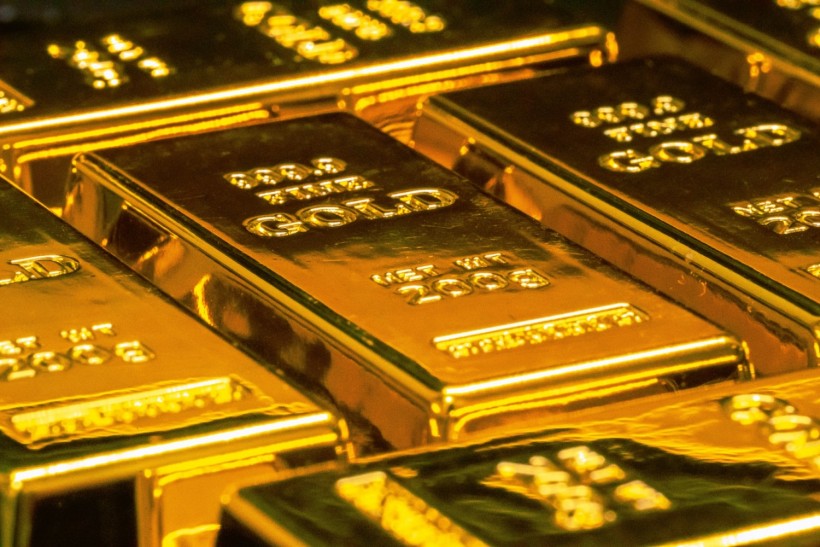
(Photo : Jingming Pan on Unsplash)
For decades, investors have flocked to a number of traditional investment options, such as stocks and IRAs that also include mutual funds and bonds. Increasingly, though, physical precious metal asset-based investments are being recognized as a potentially beneficial way to maximize savings results, according to Kevin DeMeritt, founder and chairman of gold and precious metals firm Lear Capital.
"One of the biggest misconceptions is that gold is this relic and doesn't have [a] great performance record - because nobody really talks about it," DeMeritt says. "It's been around for 5,000 years; if something's been around that long, [it's perceived as] maybe old and just no longer useful. The misconception is that gold can't produce profits for people, and it's just more of a safety asset. That's completely incorrect."
A Multipronged Approach to Investing
The stock market can be a viable way to earn returns. While it's had some notable crashes, including marked drop-offs in 1929 and 1987, on average, the stock market has supplied annual returns of roughly 10% - which equates to about 7% when factoring in inflation, according to the U.S. Securities and Exchange Commission.
Investors, however, are understandably often more concerned with current profitability prospects than with historical records - and because the stock market can be highly susceptible to economic, political, and other changing conditions, its performance can be somewhat unpredictable.
For example, following a record-setting year in 2021 when stock wealth in the U.S. grew by $20 trillion, stock market volatility erased more than $9 trillion in U.S. household wealth by September 2022 - with further losses possible through the remainder of the year, according to CNBC.
Conversely, gold's value has risen in 2022. Amid frequent stock market uncertainty, investor interest in the precious metals grew this year, according to U.S. News & World Report, which noted in June that spot gold prices - an indication of the cost of 1 troy ounce of gold within global markets - had surpassed $2,000 in March.
Gold and silver prices have performed similarly well during other challenging economic periods in the past, and have increased fairly consistently over the past two decades, according to the National Mining Association.
Since 2001, gold's value has grown 566%, according to Lear Capital[EB1] - more than twice as much as the S&P 500 index, which rose 253%, increased during the same period.
During the 2009 recession, data from the U.S. Bureau of Labor Statistics shows gold prices escalated by 50% from September 2010 to September 2011. A Lear Capital analysis found gold prices increased 147% and silver shot up 557% when investment activity lessened, according to Federal Reserve documentation, in the late 1970s due to economic concerns.
Given physical precious metal assets' track record, incorporating them into a portfolio that also contains other types of investments may be able to help offset some volatility.
"If you look at gold by itself, it's dramatically outproduced the stock market," Kevin DeMeritt says. "From the year 2000, if you invested $80,000 in stock and $20,000 in gold, it would be worth $385,000 today; you picked up an extra $65,000 in your bank account with 20% of your assets in gold."
Lear Capital's IRA portfolio comparison calculator can help you visualize what impact diversifying your portfolio with precious metals might have.
Metering the Effect of Price Pressure
The stock market wasn't the only issue consumers faced in 2022. Inflation, too, has remained stubbornly high.
After the consumer price index for all urban consumers crept up 0.6% in March 2021 - its biggest one-month increase since 2012 - inflation began a steady ascent, reaching its highest point since 1981, 9.1%, in June of this year.
The Federal Reserve's attempts to lower inflation with repeated rate increases - which have shifted the federal funds rate target range from 0.25% to 0.50% in March to 4.25% to 4.5% as of December - finally seem to be showing some effect.
However, inflation's current 7.1% level is still sizable - and is far from the Fed's 2% target. In addition, several key contributing factors, including ongoing supply chain constraints and a considerable demand for goods and services - have not fully reversed course, indicating inflation's descent may not be particularly speedy.
Consequently, investors can likely expect to see more stock market ups and downs in the future, along with the inflation level getting gradually lower.
"It's been a long time since we've had this kind of inflation," Kevin DeMeritt says. "We're starting to see more and more people become concerned about the volatility in the stock market - which happens when you have high inflation. We may only be halfway to the top with interest rates, if inflation plays out like it did in the '80s. Inflation could be worse, actually, because the supply chain part of the inflation equation is broken."
Investors' portfolios can suffer as a result. In addition to high inflation altering their
current purchasing power, with their savings earning less, it can also mean consumers may need to increase the amount they're saving for retirement to ensure they'll be able to afford their intended lifestyle after leaving the workforce.
"At today's inflation rate, in seven to eight years, [the value of] your money would drop almost in half," Kevin DeMeritt says. "Each year that goes by, if I'm losing7% of the value of my paper money purchasing power, I need something to offset that; gold happened, in the past, to be one of the better assets that can help offset [a high] inflation rate."
If inflation remains high and the stock market keeps zigzagging through each business quarter in 2023 - and potentially beyond - precious metal-based investments could become an increasingly popular choice for investors, according to Kevin DeMeritt.
"It's going to help give you stability," the Lear Capital founder said[EB2]. "No one has a crystal ball; I can't tell you when the stock market or home values are going to fall. You need something that has that inverse relationship to things that happen in [other investment] asset classes. You're going to continue to see, over the next five or six years, that demand will continue to increase for precious metals."
* This is a contributed article and this content does not necessarily represent the views of hngn.com








